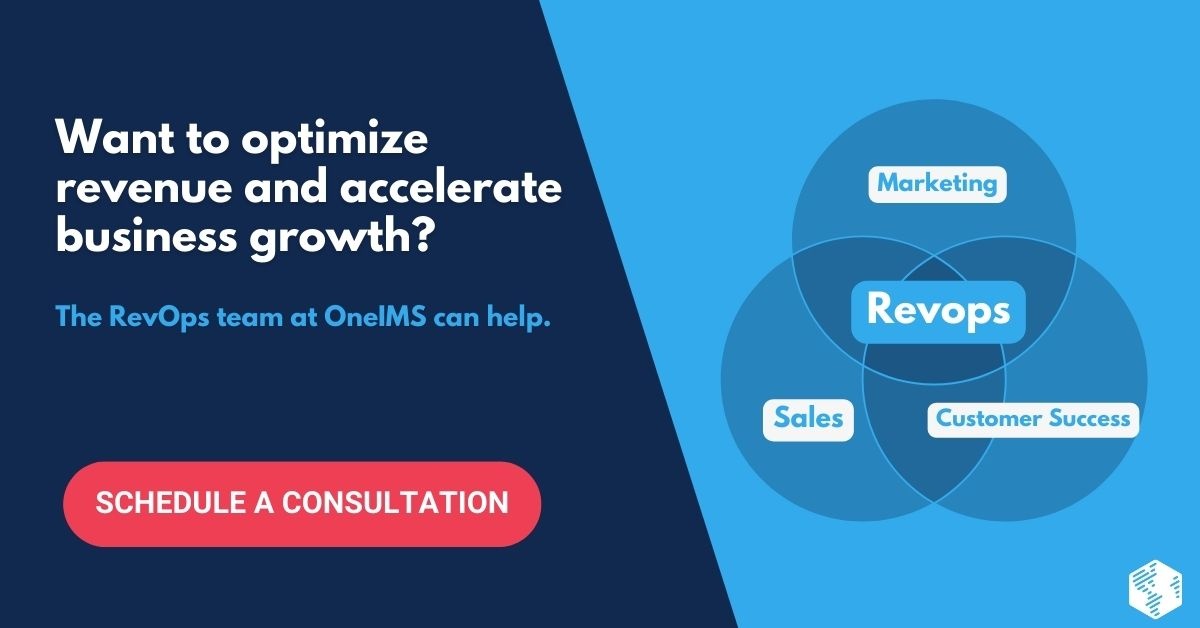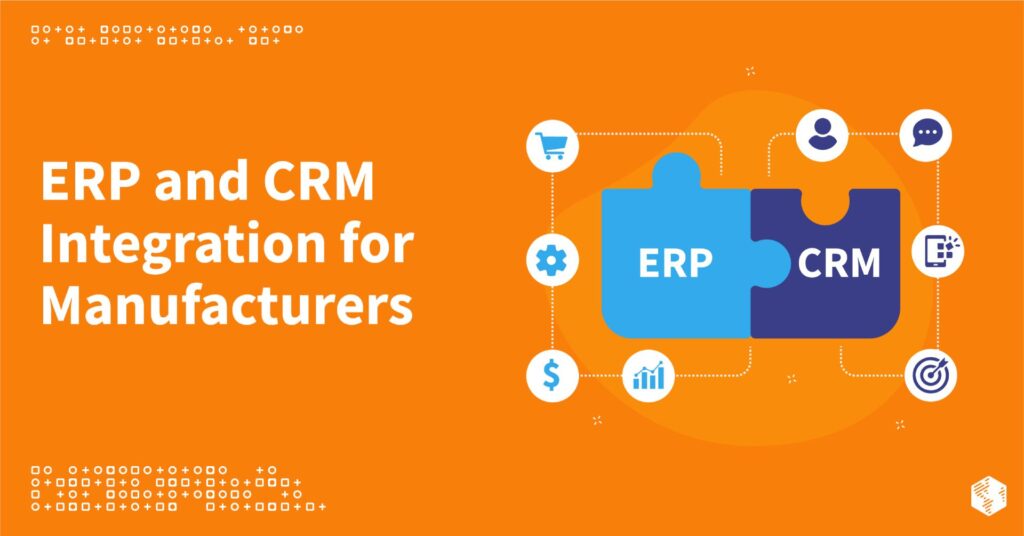Revenue operations (RevOps)—an organizational methodology that ensures a business is achieving maximum revenue and growth potential—has been gaining popularity across the business-to-business (B2B). In fact, according to a report by Revenue.io, 48% of surveyed companies had a RevOps function in 2022, and 11% have plans to introduce a revenue operations strategy in the next calendar year.
However, despite its growth across industries, adopting a RevOps framework isn’t always smooth sailing. There are many challenges that revenue operations teams face as they create and implement RevOps within an organization.
To successfully harness the full power and growth potential of revenue operations, keep these common RevOps challenges (and their solutions) in mind.
Challenge #1: Siloing Data & Processes
Data is the foundation of revenue operations. Your RevOps strategy relies on accurate, organized, and up-to-date data. But when customer data is inaccessible, messy, inaccurate, incomplete, or spread out across multiple applications, it’s nearly impossible to get the high-quality data needed to make data-driven decisions.
In other words, without trustworthy data, your organization can’t achieve your revenue goals.
As part of a successful RevOps strategy, data must be accurate and stored in one centralized location. Clear processes and systems that dictate how data is collected, organized, managed, and accessed are also essential.
Possible Solutions
- Automate data management where possible to keep systems clean
- Spend time coaching team members on how to collect, manage, and analyze customer data
- Collaborate with customer-facing teams to create clear, comprehensive guides and workflows to guide processes
- Establish processes to regularly clean and update data, including matching, normalization, and deduplication solutions
- Evaluate your existing data to ensure your system is collecting enough of the right data
- Explore options for enhancing customer data with third-party data sources
- Define workflows for gathering and accessing data across the entire customer journey
- Make sure data is up-to-date and easily accessible by all revenue-generating teams
Challenge #2: Lacking Alignment Between Sales, Marketing, & Customer Success
Traditionally, marking, sales, and customer success teams are siloed, which means their processes, workflows, data, technology platforms, and people work in isolation. No sharing of data, insights, or best practices—and no way to streamline communication or improve processes.
This fragmentation has wide-reaching effects. When customer-facing teams are misaligned, they are missing out on opportunities to increase revenue, get valuable customer insights across the lifecycle, improve data quality, and more.
Alternatively, when sales, marketing, and customer success teams are aligned and working toward the same revenue goals, they can start working together, finding solutions, and collaborating across departments.
Possible Solutions
- Introduce team members across departments to one another
- Invite members of other departments to sit in on team meetings
- Move marketing and sales team offices or desks close to each other to encourage natural dialogue
- Encourage executives to support and promote this culture change
- Define shared revenue goals among customer-facing departments
- Focus on team building to build trust and to encourage collaboration and communication
- Ensure marketing, sales, and customer success teams are working from the same centralized dataset
- Create a unified customer journey to ensure a uniform brand voice and seamless transition of leads from one department to another
Challenge #3: Scaling & Streamlining Your RevOps Strategy
As your B2B organization changes and grows, your RevOps strategy needs to work at scale.
Creating a more efficient revenue operations framework is an essential element in driving growth and scaling your business. If you streamline and optimize your RevOps strategy, you can improve the customer experience, increase efficiency, and reach your revenue goals.
The process of scaling and streamlining your RevOps strategy is highly subjective. How you approach RevOps depends on the growth stage of your company as well as the resources you have available to dedicate to revenue operations. Newer startups may have fewer resources, but they can also start with a RevOps framework that addresses scalable growth from the very beginning. Alternatively, established businesses likely have expanded resources, but undoing inefficient processes is more complicated than creating and following streamlined workflows in the first place.
Consider how you can scale and streamline your company’s RevOps strategy to maximize your revenue growth potential.
Possible Solutions
- Review and update your RevOps strategy on a regular basis and adjust as needed to stay ahead of the competition and meet growing revenue goals
- Get input from revenue-generating departments on how to optimize resources
- Implement automation whenever possible to increase efficiency
- Standardize workflows within and among marketing, sales, and customer success teams to reduce confusion, streamline processes, and improve performance
- Establish data management practices and a single source of data for the whole organization
- Get executives on board with your RevOps strategy
- Consider outsourcing revenue operations to an experienced RevOps team
Challenge #4: Integrating & Adopting Technology
B2B organizations often suffer from a fragmented approach to technology. Each team or department has their own data systems and software platforms, none of which can integrate with one another or stay up to date. From customer relationship management (CRM) software to marketing automation tools, these technology platforms are often siloed alongside the teams that use them.
The ideal RevOps technology stack is composed of two types of tools: dedicated RevOps software and department-specific technology that supports revenue generation. The important thing to keep in mind is that all the tech used by marketing, sales, or customer service needs to integrate seamlessly across platforms and teams.
When it comes to RevOps technology, it’s easier said than done. Adopting a new-and-improved tech stack may temporarily disrupt normal operations while your team members get up to speed, and there is, of course, the cost to consider. However, since a revenue operations framework unifies an organization’s platforms, people, and processes to maximize growth potential, using the right tools is a critical element to successful revenue growth.
Possible Solutions
- Perform a technology audit to get a clear picture of your existing tech stack
- Create a list of “must have” tools and “nice-to-have” tools and prioritize the must-haves
- Train team members on how to use each platform to the fullest extent
- Track technology usage to reveal any unnecessary or unused tools
- Ensure tools integrate with each other across departments
- Focus on acquiring technology that supports RevOps processes and revenue-generating departments
- Consolidate your tech stack where possible
- Unify customer data in a single, centralized, organized platform
Challenge #5: Measuring & Analyzing Revenue Performance
Revenue operations isn’t a one-time deal. It’s important to accurately measure the results of your RevOps strategy and analyze revenue performance data to ensure what’s working, what isn’t working, and what you can do to improve.
Vanity metrics like impressions, organic traffic, open rates, and bounce rates are exciting to see, but these key performance indicators (KPIs) don’t actually provide information on the revenue performance of your business. Instead, revenue-focused metrics like conversion rates, customer lifetime value (CLV), customer churn rates, customer acquisition costs, and sales pipeline velocity serve as accurate indicators of your revenue performance.
Determining how your RevOps strategy and processes impact revenue performance is essential to calculating your organization’s revenue growth.
Possible Solutions
- Establish KPIs that accurately paint a picture of your organization’s revenue performance
- Define metrics across all stages of the customer lifecycle
- Gather and analyze interdepartmental performance data
- Share analyses and insights with revenue-generating teams to ensure all departments stay on course
- Structure your technology stack to get a clear view of prospect and customer data across the buyer’s journey
- Identify sources of revenue
Achieve Revenue Growth with RevOps at OneIMS
Revenue operations can help your B2B organization identify revenue opportunities and achieve scalable growth—when it’s done right. In order to implement a successful RevOps strategy, prioritize overcoming these challenges for revenue growth and operational excellence.
At OneIMS, our team of RevOps experts is ready to help your organization design and implement a revenue operations framework that maximizes your growth potential and transforms your business into a revenue-generating machine—all while creating a plan to overcome common RevOps challenges. We have a long history of working with companies in a variety of industries to develop innovative and data-driven marketing solutions, and we pride ourselves on producing measurable and sustainable results that lead to long-term growth.
But you don’t have to take our word for it. View testimonials from our clients and read our blog to get an idea of our training, experience, and track record of success.
Are you ready to meet your revenue goals and prioritize growth? Schedule a consultation with us today to get started.

































